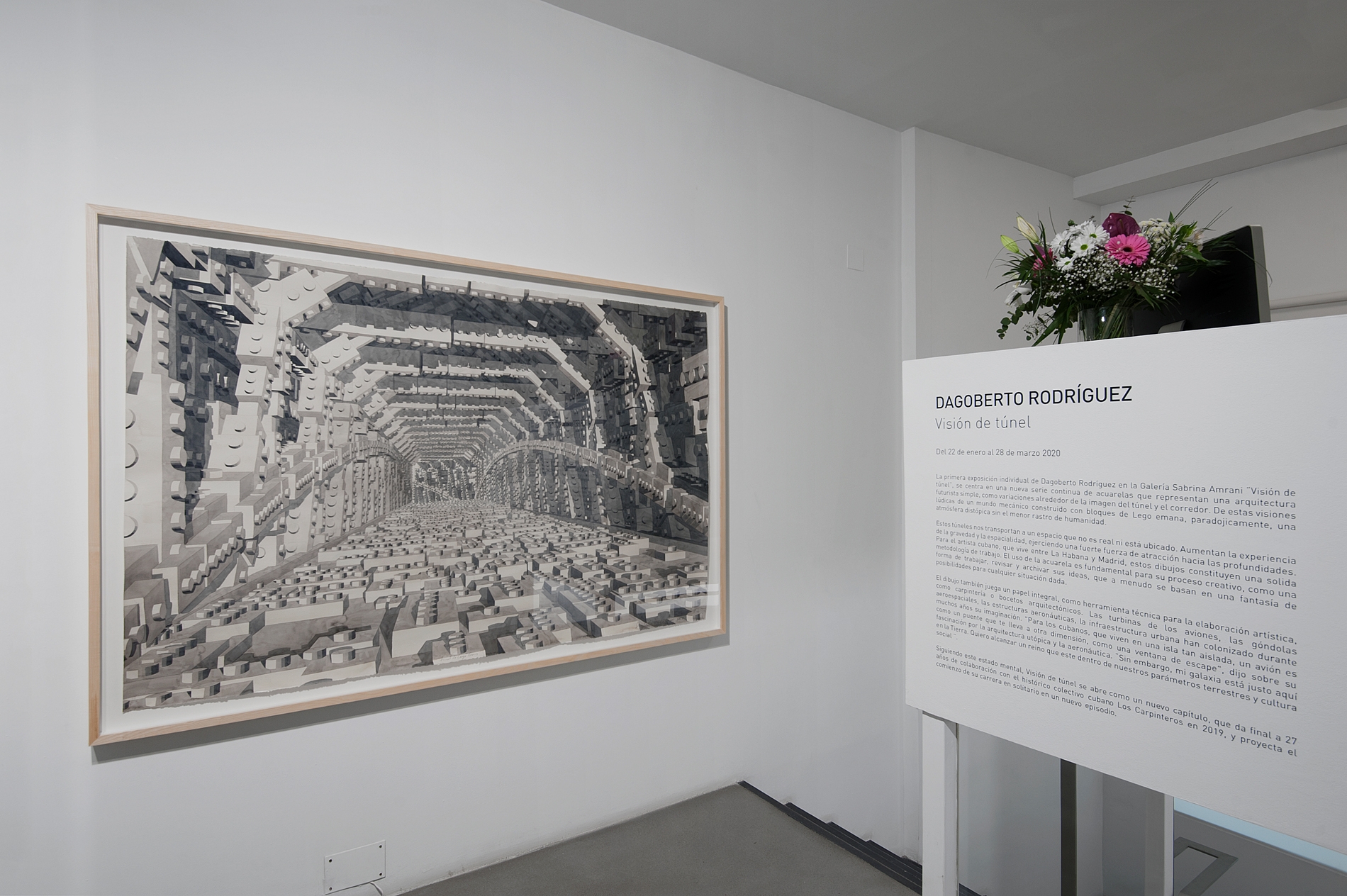
Dagoberto Rodríguez
Visión de túnel
Sabrina Amrani
22 Jan - 28 Mar 2020
Dagoberto Rodríguez first solo exhibition at Sabrina Amrani Gallery, Visión de túnel focuses on a new ongoing series of watercolors depicting simple futuristic architecture of a possible future, as variations around the image of the tunnel and the corridor. From these playful visions of a mechanical world built with Lego blocks emanates paradoxically a dystopic atmosphere without the slightest trace of humanity. These tunnels transport us into a space that is not real nor located. They increase the experience of gravity and spatiality, exerting a strong force of attraction towards the depths. For the Cuban artist, living between Havana and Madrid, these drawings constitute a strong working methodology. The use of watercolor is fundamental to his creative process, as a way of working, revising and archiving his ideas, which are often based on a fantasy of possibilities for any given situation. Drawing also plays an integral part, as a technical tool for artistic elaboration, like carpentry or architectural sketches. Aircraft turbines, aerospace nacelles, aeronautical structures, urban infrastructure have for many years colonized his imagination. “For Cubans, living on such an isolated island, a plane is like a bridge taking you into another dimension, like an escape window,” he said about his fascination for utopia architecture and aeronautics. “However, my galaxy is right here on Earth. I want to reach a realm that’s within our terrestrial parameters and social culture.” Following this state of mind, Visión de túnel opens itself as a new chapter, since the end of his 27 years of collaboration with the historical Cuban collective Los Carpinteros in 2019, projecting the beginning of his solo career into a new episode.
My work is certainly metaphorical and symbolic, and metaphors often have profound conceptual value
Dagoberto Rodríguez



[…]the Lego bricks could be disassembled, deconstructed or agglomerated to new blocks to expand at any time, like a huge construction site. This Lego world can also collapse at any moment as Cuba’s communist utopia. It is also the image of the extreme fragility of today’s world of images and information, where no construction is solid anymore.
Jerôme Sans.
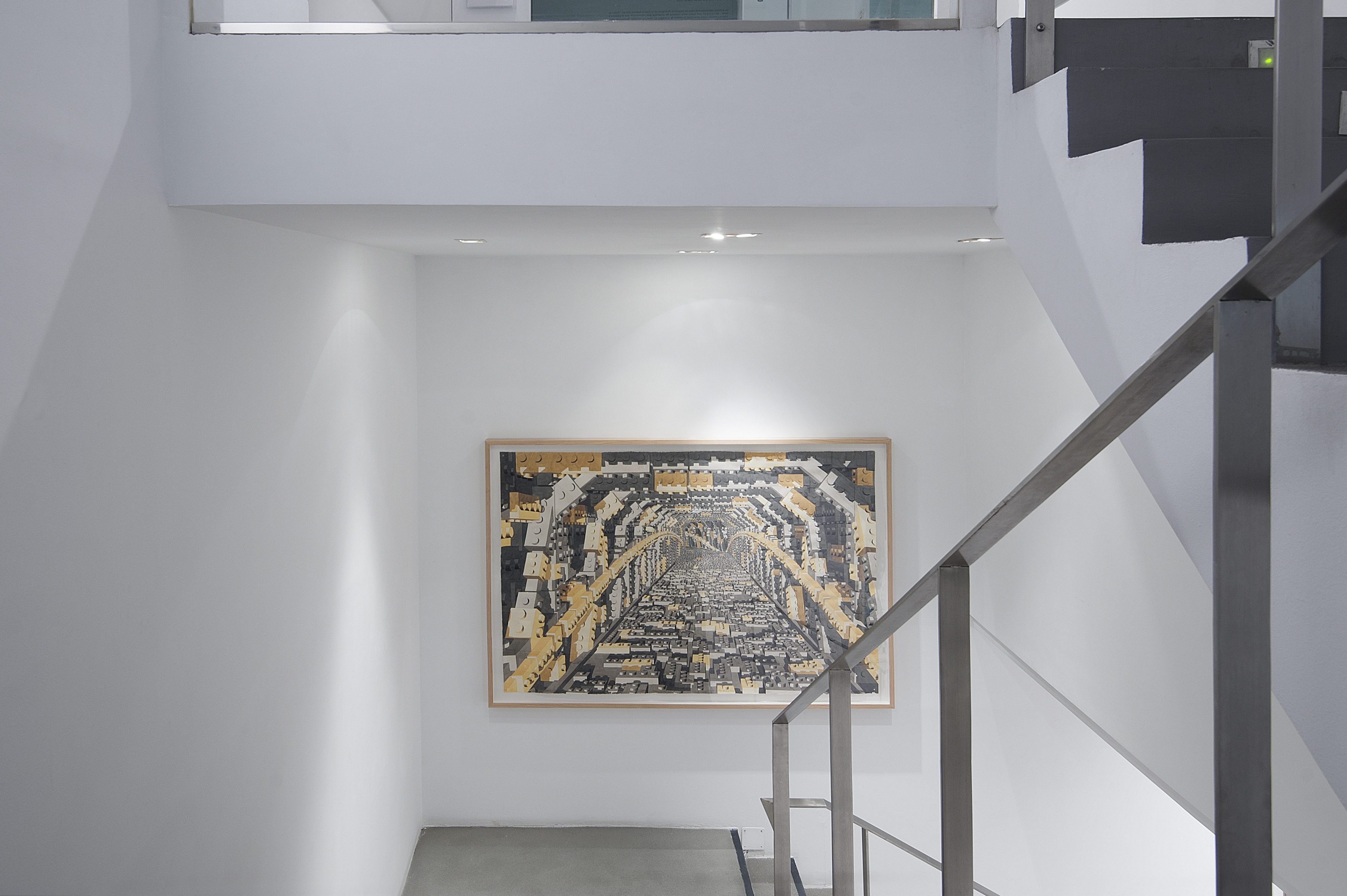
The tunnel is in itself a polyphony of meanings, a polysemy which symbolizes all the dark, anxious, painful crossings or expectations that can lead to another life. Meticulously executed, the watercolors are of a monumental scale. This medium requires letting go while striking a balance between control and freedom of the gesture. Watercolour is the medium of choice for text illustration, from Egyptian or medieval manuscripts. Immersive, these drawings catch the eye, as if you could pass to the other side of the mirror or get sucked in. They only become even more credible thanks to tenfold illusionist effects that encourage this transition to another world. Dagoberto Rodríguez creates ultra-contemporary and urban narratives of a mechanical, cold and dehumanized world bathed into an electric light … A kind of outside world, closed in itself, enigmatic, without landmarks and of which we do not know if it is dreamlike, dystopic or concrete.
Tunnels and corridors are covered and dark communication paths with no clear location, leading us through the darkness from one area of light to another. They convey the image of the irreversible, the trial or of the passage from one state to another. At the end of each tunnel, a door symbolizes its infinite nature. The tunnel is the illusion of perspective, its emblem, according to Alberti’s definition of the painting as an open window to the world. Within the epic painting, the whole enigma of the world and the history of painting is at stake. It also alludes to today’s racing games on our smartphones or to virtual reality, to all these windows and multiple screens that suck us into information tunnels.

Dagoberto Rodríguez
Interior de Lego Gris y Ámbar, 2019
Watercolor on paper.
130 x 200 cm.
Inquire about this work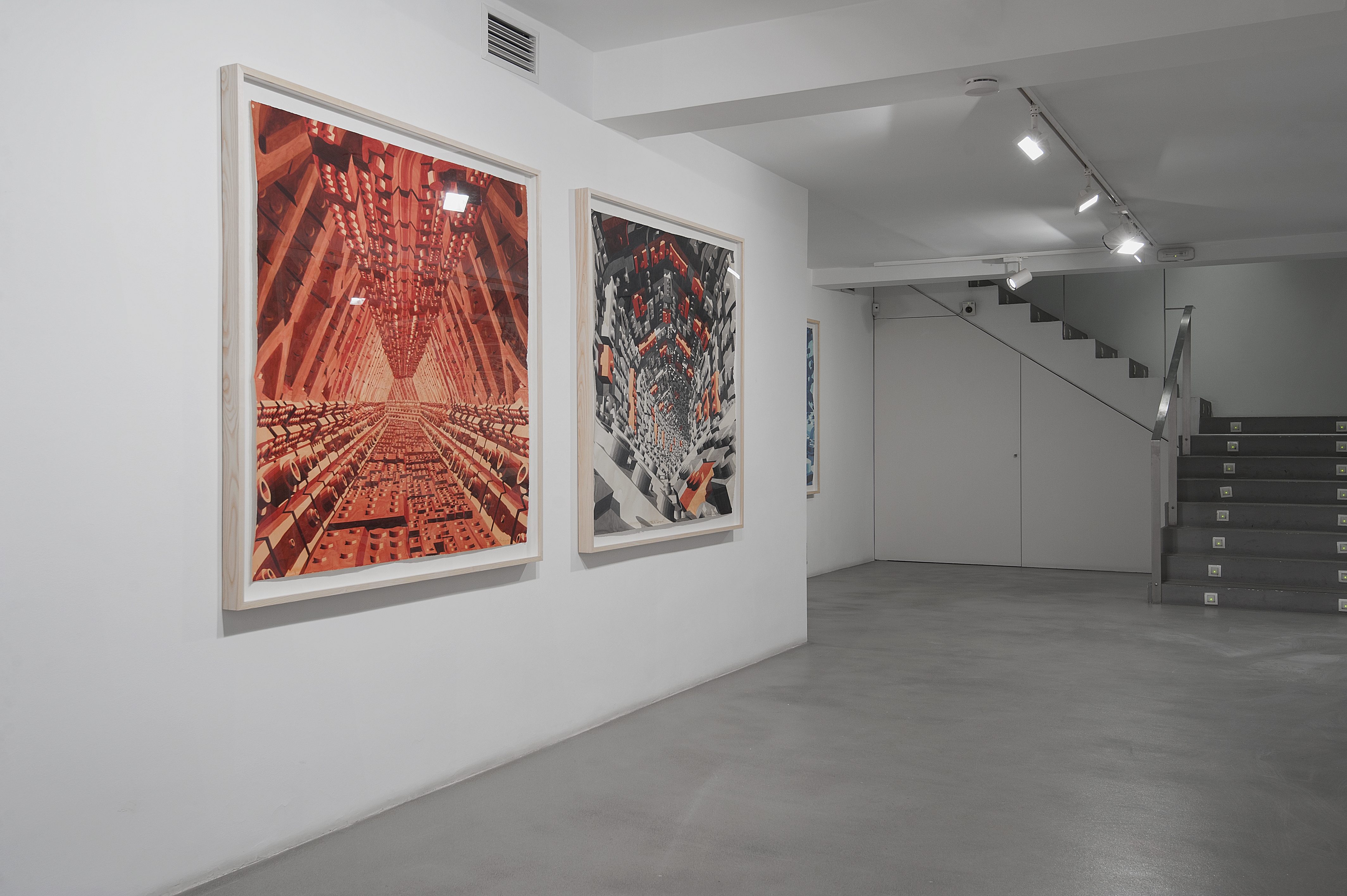

Dagoberto Rodríguez
Corredor 17, 2019
Watercolor and graphite on paper.
200 × 260 cm.
Inquire about this work
Dagoberto Rodríguez
Pasillo hexagonal, 2019
Watercolor and graphite on paper.
130 × 130 cm.
Inquire about this work
In the heart of the corridor, we are between two indistinct spaces, as in transit, with no possibility to escape. While they may seem unlimited, these tunnels still hold us prisoners. Are those tunnels embodying the prison of our knowledge or of our certitudes? They have a false horizon. Wandering towards the light at the end of the tunnel as in Plato’s cave, we do not know if we will come across the exit or if it is only the light towards the next corridor that guides us. It appears that those tunnels generate feelings of claustrophobia, stagnation, insecurity and perhaps also frustration. They represent the emblem of the contemporary world where all our dogmas have been overthrown and where we do not know where we are going. To quote Milan Kundera in Identity: “I would imagine life before me like a tree. I used to call it the tree of possibilities. We see life that way for only a brief time. Thereafter, it comes to looking like a track laid out once and for all, a tunnel one can never get out of.” Foucault had already spoken in Discipline and Punish of “conceptual dungeons of incarceration”. Those tunnels also refer to Cuba’s endless history, whose future directions cannot be predicted. The son of a keen astronomer, Rodríguez grew up in Cuba in a socialist environment, a “communist science fiction”, “a failed utopian state”, to quote him. From Cuba’s limited access to technology, he inherited a kind of “Robinson Crusoe syndrome”. Having to do things by himself, step by step, through recycling and inventive resourcefulness has been his way to find a new language of expressive system. Maybe that’s why all his architectural fantasies are built in Lego, a game with elementary principles and rules. Then, the Legos bricks could be disassembled, deconstructed or agglomerated to new blocks to expand at any time, like a huge construction site. This Lego world can also collapse at any moment as Cuba’s communist utopia. It is also the image of the extreme fragility of today’s world of images and information, where no construction is solid anymore.
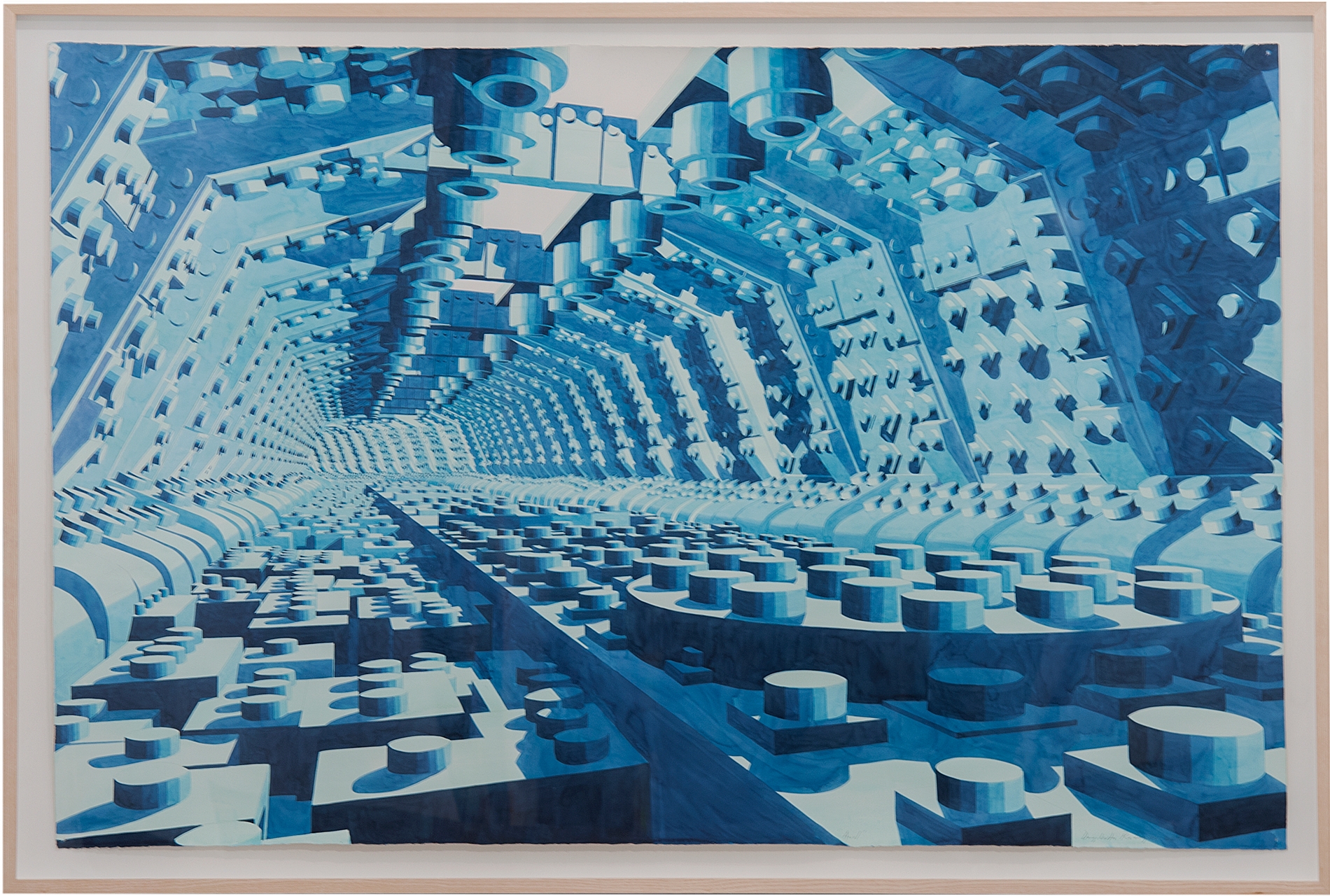

The arsenal of objects that we interact with everyday holds huge symbolic potential for my narratives. […] Architecture is also an object, capable of generating a language and expression
Dagoberto Rodríguez
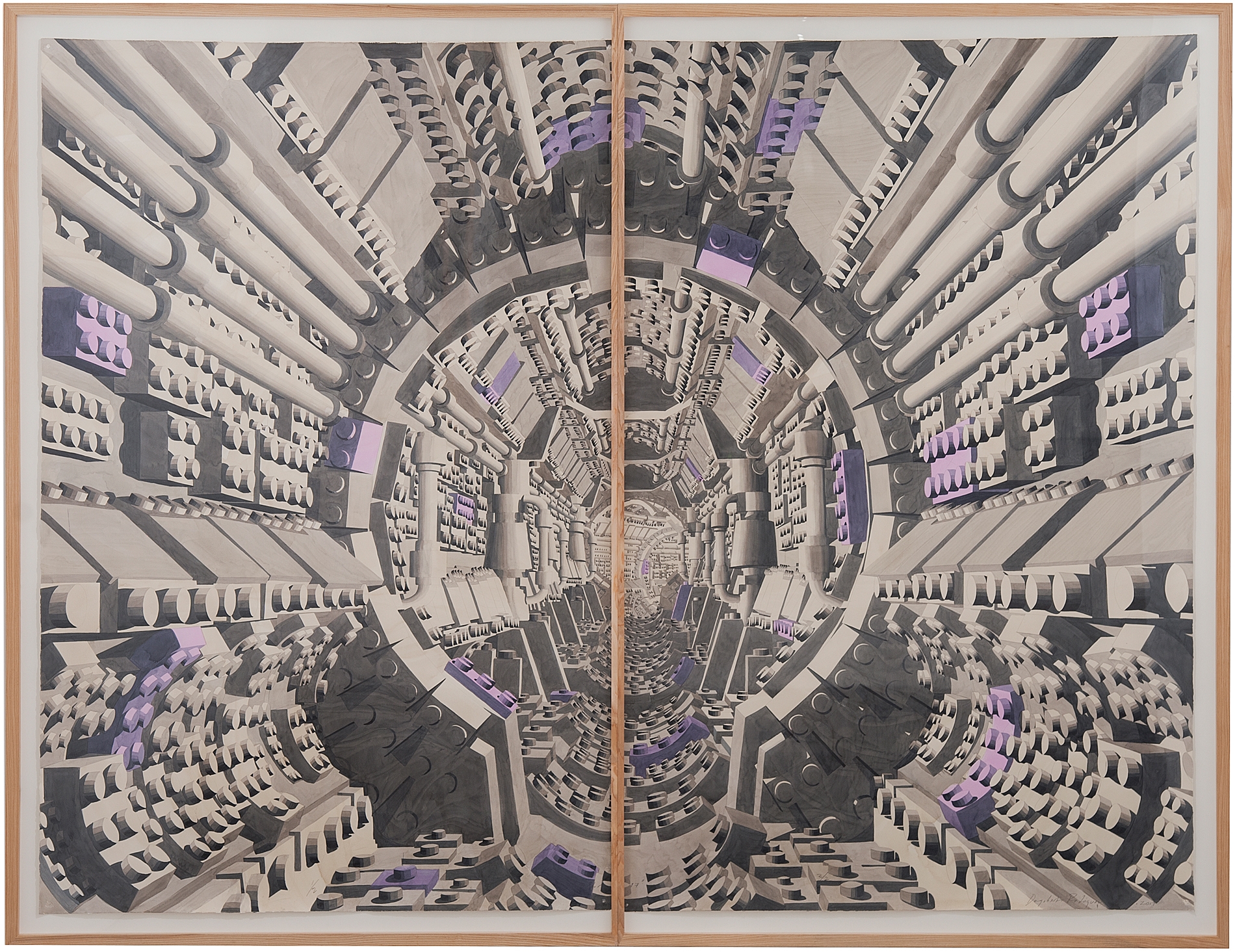
Dagoberto Rodríguez
Corredor 17, 2019
Watercolor and graphite on paper.
260 x 200 cm.
Inquire about this work